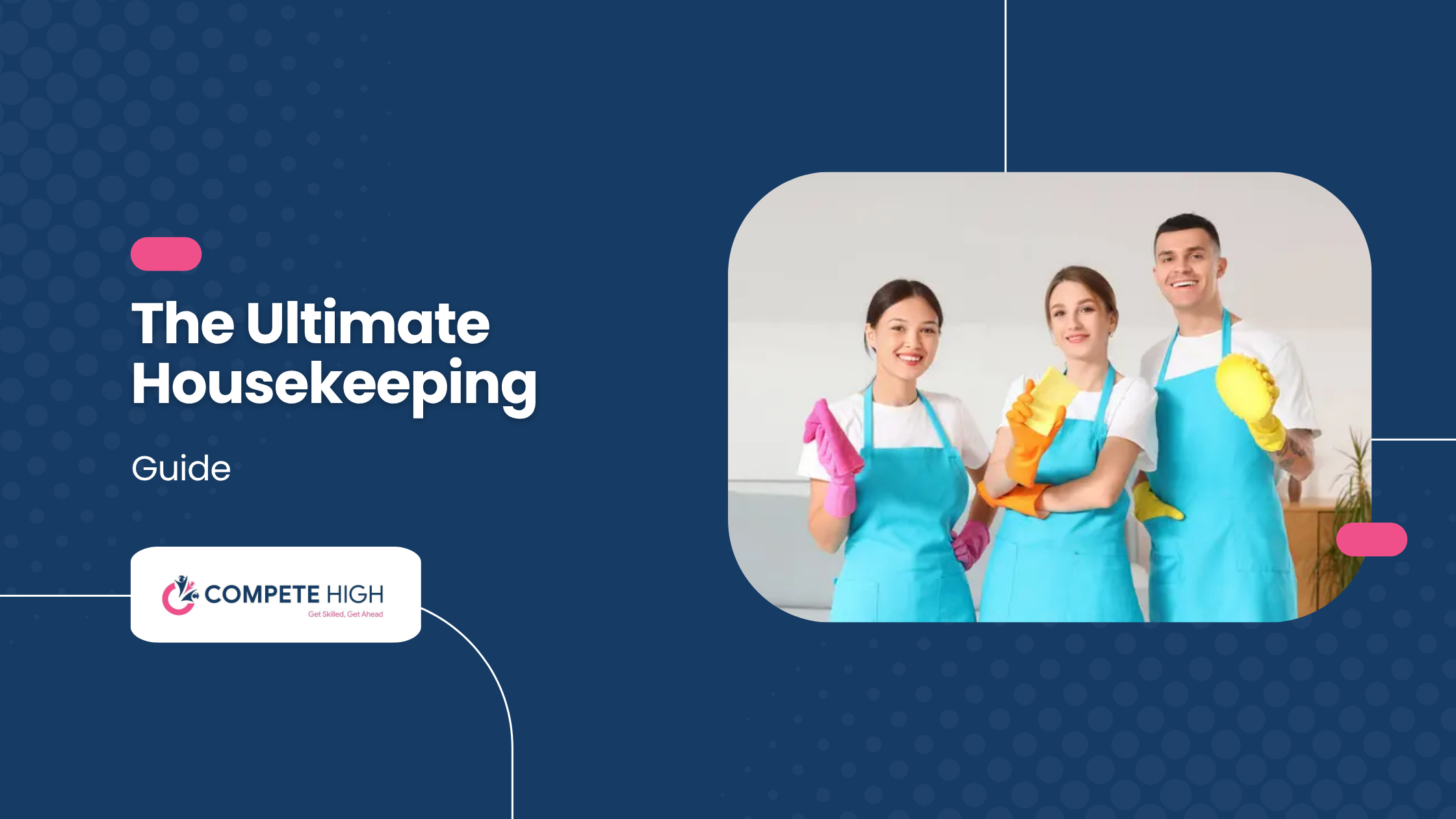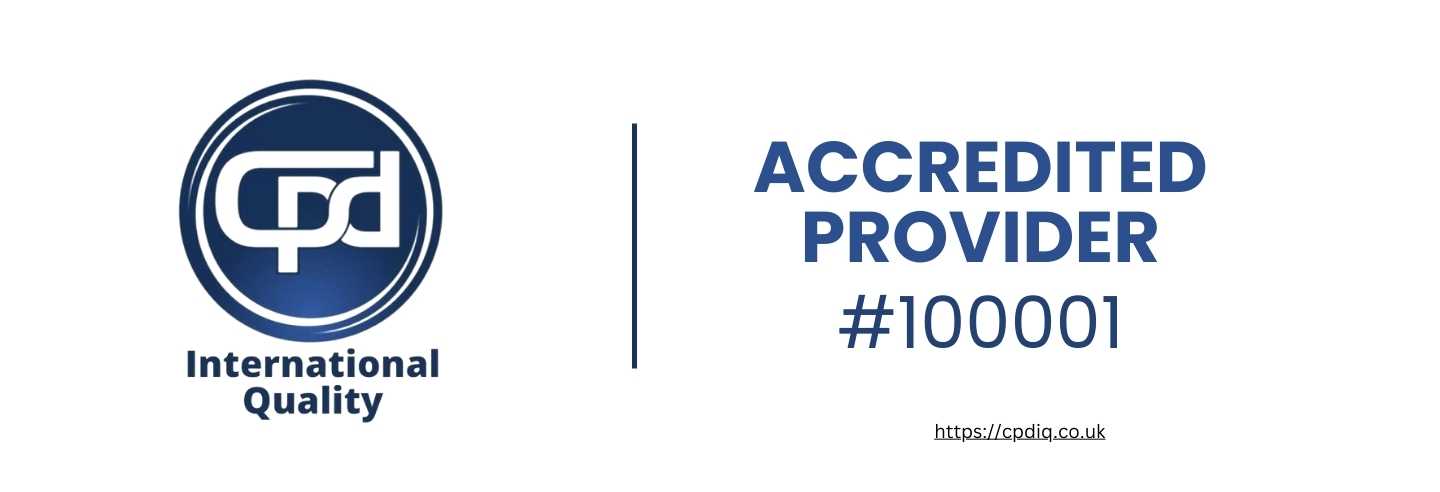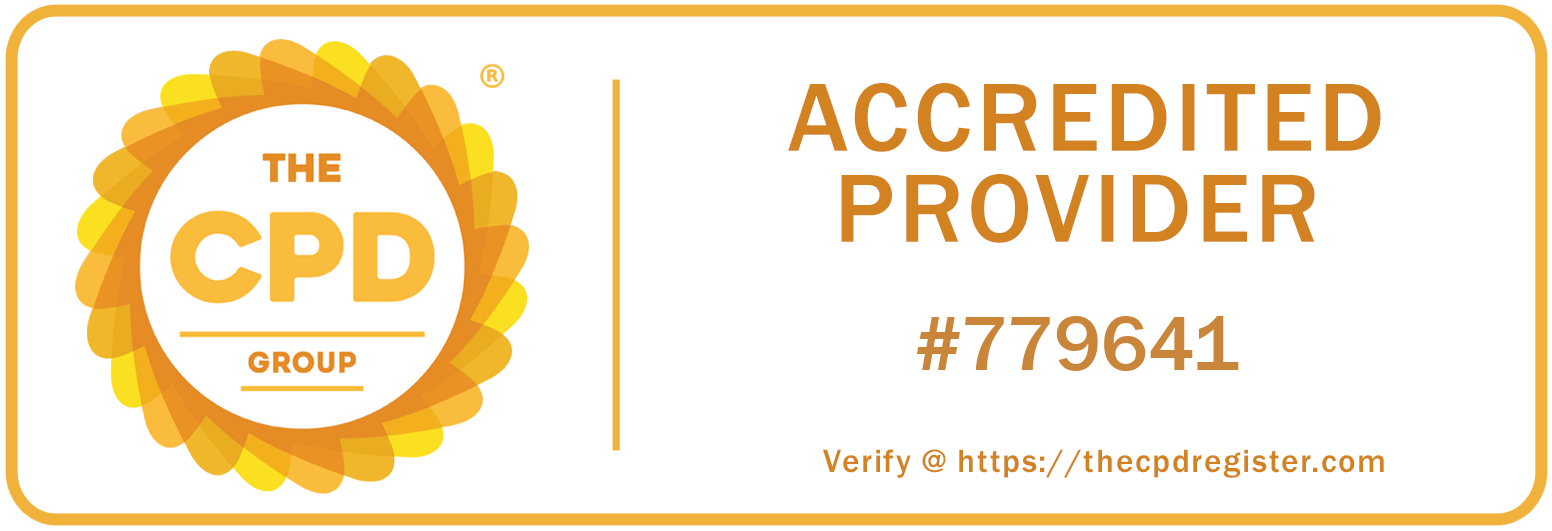
A housekeeping guide is significantly more than just cleaning. It involves the systematisation, organisation, and disciplined coordination required to maintain and keep a home, hotel, or workplace running efficiently. The benefits of a clean and well-maintained environment extend well beyond aesthetics — they influence safety, health, productivity, and even the mental well-being of those living or working in the space.
Yet for many people, the word housekeeping can evoke feelings of overwhelm. Where should one even begin? Is there a specific order to follow? And how do professionals manage to keep everything neat without spending all day and night cleaning and scrubbing?
This is exactly what the Housekeeping Guide is designed to address. It doesn’t matter whether you’re a homeowner trying to keep chores organised, looking to improve efficiency through a more structured system, or a professional aspirant exploring a career in housekeeping — the fundamentals, systems, and practical steps outlined in this guide will help you succeed.
Upon completing this Housekeeping Guide, you will understand and appreciate:
- The core principles and elements of effective housekeeping.
- Professional organising techniques and systems such as 5S, the 3 R’s, and ABCD.
- Cleaning workflow systems and patterns, especially the seven cleaning stages.
- Efficiency rules that save time while maintaining high standards.
- The professional housekeeping career pathway, which demands skill, attention, and training.
Quick Overview
Whether you’re maintaining a tidy home or exploring a career in hospitality, understanding housekeeping is essential for health, safety, and long-term organisation. This guide breaks down the key systems and strategies professionals use daily.
Whether you’re managing your home or applying for a hotel job, this guide walks you through:
✅ Master housekeeping basics, systems (5S, ABCD), and the 7-step cleaning process
✅ Use smart cleaning rules for efficiency and consistency
✅ Learn key skills, understand the job role, and apply confidently for hotel roles
✅ Stay organised with a printable house cleaning checklist

Whether you're wondering how to clean a home step by step or asking yourself how to start cleaning a house?, this guide will provide the clarity, confidence, and structure you need.
Part I: The Fundamentals and Philosophy
Defining the Basics of Housekeeping
What is basic housekeeping?
In the most fundamental sense, basic housekeeping is the routine cleaning and organisation of an area to make it safe, hygienic, and pleasant. For homes, it means regularly dusting, vacuuming, surface wiping, and putting away clutter. Hotels, workplaces, and hospitals have additional formal processes and quality standards for housekeeping.
This Housekeeping Guide aims to build a strong foundation for anyone looking to improve cleaning routines at home or understand the demands of professional housekeeping.
The basic housekeeping principles are:
- Cleanliness – the absence of dirt, dust, and germs.
- Orderliness – everything has a designated place.
- Safety – no accidents (e.g. clear walkways and manage spills).
- Consistency – develop routines to prevent spaces from becoming unmanageable.
Basic housekeeping is the foundation of all subsequent advanced cleaning strategies and professional methods. It's also a key part of how to learn housekeeping skills effectively, especially if you're aiming to build habits that last.
The 7 Basic Principles of Housekeeping
What are the seven basic principles of housekeeping?
Professional housekeeping frameworks identify seven guiding principles on which effective cleaning and organisation are built. These are especially useful for those interested in what is the job role of housekeeping, as they form the core of most training and daily routines.
- Sorting – decluttering (removing unneeded items).
- Systematic Arrangement – keeping items within easy access.
- Shining – cleaning to preserve the desired level of hygiene and appearance.
- Standardising – establishing precise routines and regulations so that tasks can be performed uniformly.
- Sustaining – keeping order over a period of time so that the area does not slip back into disorder.
- Safety – not creating hazards with cleaning methods and the cleaning spaces.
- Discipline – developing and maintaining habits and accountability to follow the housekeeping plan.
This mindset is the foundation of effective housekeeping, whether maintaining a small apartment or a large hotel. It also answers the question of how to learn housekeeping skills by offering a system to follow with consistency.
The 5 Elements of Housekeeping
Targeting: What are the five elements of housekeeping?
Another way to break down housekeeping is through its five elements. These not only focus on the cleaning tasks but also on the surrounding environment.
- Cleanliness – getting rid of dust, dirt and germs.
- Comfort – making the area pleasing to live or work in.
- Convenience – arranging spaces to make them functional and easy to navigate.
- Safety – preventing accidents through appropriate maintenance and organisation.
- Aesthetics – making the environment visually pleasing through orderliness and design.
Collectively, these tell a person that a certain place is not only clean but also functional and pleasurable. These elements are especially important in understanding what is the job role of housekeeping in both domestic and commercial contexts.
Important Housekeeping Guidelines
Targeting: What are the housekeeping guidelines?
While the principles and elements give the "philosophy," the housekeeping guidelines help with the "routine" or everyday cleaning. These guidelines help with consistency and efficiency — and are essential in both homes and professional environments.

- Start Top to Bottom: Always clean higher surfaces before lower surfaces, so dust and dirt don’t fall onto already cleaned areas.
- Work Dry to Wet: Start with dry tasks like dusting and sweeping, then move to wet tasks like mopping.
- Use the Right Tools: Use the appropriate cleaning products and tools (e.g. glass cleaner for windows, disinfectant for bathrooms).
- Prioritise Hygiene Areas: Kitchens and bathrooms require special attention because we eat food and moisture collects there.
- Declutter Before Cleaning: It improves cleaning efficiency and speed when all the items are already in their appropriate place.
- Follow a Routine: Daily, weekly and monthly schedules will help keep mess from building up.
- Health & Safety First: Use protective gloves when appropriate, ventilate areas when cleaning with chemicals and keep pathways clear.
These are the guidelines that help avoid cleaning randomly and inefficiently. Understanding what are the housekeeping guidelines is crucial whether you're cleaning at home or working professionally. They also help answer how to learn housekeeping skills through structure and consistency.
Part II: Organising the Space and Mindset (Pre-Cleaning Prep)
Understanding the focus of housekeeping is not just about cleaning. It's about having the right framework and technique for how things should be organised and maintained. This is essential so that you don't feel overwhelmed and spiral back into a mess. It's the reason why a lot of housekeeping practices borrow from the workplace, especially the Japanese practices like 5S. There are other additions such as the 3 R’s of waste management and the ABCD method of quick tidy-ups.
These tools are not theoretical. They are practical tools that you can apply to housekeeping to make it quicker and easier. These concepts are often included in any good Housekeeping Guide, and understanding them is part of learning what is the job role of housekeeping in both domestic and professional settings.
The 5S Rules for Housekeeping
What are the 5S rules for housekeeping?
The 5S system has been derived from Japanese management and is now widely used for housekeeping at home and at work. It stands for:
- Sort (Seiri) – Get rid of everything unnecessary from the space. This might look like decluttering your wardrobe and donating pieces you no longer wear.
- Set in Order (Seiton) – Arrange things so they are easy to find and use. In a kitchen, this might look like grouping frequently used utensils together.
- Shining (Seiso) – Clean regularly, not just when the dirt has built up. Wipe counters, dust, and vacuum to prevent accumulation.
- Standardising (Seiketsu) – Establish routines with consistency. For instance, set Wednesdays as laundry days and Sundays for mopping floors.
- Sustaining (Shitsuke) – Maintain the discipline to develop good habits. This is often the most challenging step, but it ensures cleanliness becomes part of everyday life.
Why 5S Works in Housekeeping
5S is designed to save time, keep areas uncluttered, and build a cleaning rhythm that can be maintained. This is particularly effective in busy households, as it helps multiple people follow the same cleaning routines. In the hospitality industry, including hotels, 5S is a standard part of daily checklists. It's an integral part of any professional Housekeeping Guide and answers the question: What are the 5S rules for housekeeping?
The 3 R's in Housekeeping
The 3 R's – Reduce, Reuse, and Recycle – are primarily associated with waste management, but they also play a vital role in effective and sustainable housekeeping.
- Reduce – Cut back on waste and unnecessary items. This might mean buying fewer products and opting for multi-purpose cleaners.
- Reuse – Repurpose items wherever possible. For example, old t-shirts can become dust cloths, and glass jars can be reused for storage.
- Recycle – Separate and recycle waste properly — plastics, glass, paper, and organic materials.
Why the 3 R’s Matter
Applying the 3 R’s shows that your housekeeping approach goes beyond appearances — it reflects responsibility. Whether in a home or a hotel, it sets an example of sustainability. It also results in lower costs, reduced environmental impact, and better habits overall — an essential part of what is the job role of housekeeping today.

The ABCD of Housekeeping
The ABCD of housekeeping is a simple, quick-reference method for managing daily tidying. Often taught in professional housekeeping courses, it is equally useful at home.
- A – Always: Always keep things in their proper place.
- B – Better: Complete today’s cleaning today — don’t delay it.
- C – Control: Keep clutter under control.
- D – Discipline: Maintain the routine.
Applying ABCD in Real Life
Imagine you're cleaning your living room. Using ABCD:
- You Always put remote controls, books, and blankets back in their proper spots.
- You make the Better choice by wiping down the coffee table today instead of waiting until it's sticky.
- You Control clutter by disposing of junk mail and magazines as they arrive.
- You show Discipline by doing it regularly, so the room never falls into chaos.
ABCD is often considered part of what are the 5 rules of smart cleaning — quick, efficient, and repeatable systems that keep spaces in order without becoming overwhelming.
5S vs. ABCD
ABCD is a lightweight reminder — easy to teach, remember, and apply. 5S, on the other hand, is a structured and systematic framework used both at home and in industry. Both are valuable, and both are included in this Housekeeping Guide to help build a practical and sustainable cleaning system.
Why Do All This?
At first glance, 5S, the 3 R’s, and ABCD might seem like corporate jargon. But these are highly practical tools. Here's why they matter in housekeeping:
- They streamline cleaning, making it less time-consuming.
- They bring structure so everyone in the home or workplace knows what’s expected.
- They promote sustainability by reducing unnecessary work, waste, and clutter.
- They build long-term habits — and that is what separates short-term cleaning from long-term housekeeping.
These systems aren't just about cleaning your space once. They're about ensuring it stays clean — day after day.
Understanding them is essential not only for personal use but also for anyone who wants to know how to learn housekeeping skills or is exploring what is the job role of housekeeping.
Part III: The Step-by-Step Cleaning Action Plan (Putting It Into Practice)
Housekeeping requires both action and thought. The difference between a chaotic house and one that’s manageable largely comes down to having a defined action plan. Without a plan, cleaning can become a pointless scavenger hunt. The good news is that a well-defined method allows for stress-free, quick, and thorough cleaning. This section of the Housekeeping Guide shows you how to professionalise your cleaning approach.
Preparation: Getting Ready to Clean a House
(Targeting: How to start cleaning a house?)
Knowing how to start cleaning a house begins with preparation. This is the first step toward reducing stress and improving consistency.
Gather Supplies
Collect all your cleaning products and tools in one place — a caddy, basket, or trolley makes this easy. This should include:
- Microfibre cloths and dusters
- Vacuum cleaner and mop
- Disinfectants and all-purpose cleaners
- Gloves, sponges, and bin bags
Declutter First
Remove items from floors, counters, and tables. It’s much faster to clean surfaces when objects aren’t in the way. This is also a key principle of what is basic housekeeping — clearing space before cleaning it.
Create a Playlist or Timer
Music or podcasts can make the task enjoyable. Some prefer the 20/10 method (20 minutes cleaning, 10 minutes break), which we’ll cover later.
Work Room by Room
Instead of hopping between spaces, commit to finishing one area before moving to the next. This keeps cleaning focused and manageable.
Preparation ensures cleaning feels structured rather than endless. Choose a room to concentrate on and try to finish it before moving to the next. This makes preparation much easier and aligns with the strategies in this Housekeeping Guide.
The 7 Stages of Cleaning: A Professional Workflow
In many hotels and hospitals, cleaning staff are trained to follow a 7-step cleaning process — a method that makes cleaning faster and more effective.

- Declutter – First, remove any rubbish or misplaced belongings.
- Dust – Begin with the highest surfaces, such as shelves, frames, lamps, and ceiling fans.
- Wipe Surfaces – Use disinfectant or an all-purpose cleaner on counters, tables, and desks.
- Scrub – Apply elbow grease to tougher areas like sinks, stovetops, and bathtubs.
- Vacuum – Use appropriate attachments for rugs, carpets, and upholstery.
- Mop Floors – Finish with the floors, using cleaners suited for tile, laminate, or wood.
- Finishing Touches – Replace items neatly, fluff pillows, fold throws, spray air freshener, and scan for anything missed.
This sequence ensures no area is missed and prevents repetition — such as vacuuming before dusting, which would just send dust back onto clean floors. It’s a proven method and a central part of any professional Housekeeping Guide.
How to Clean a Home Step by Step (Room by Room Breakdown)
(Targeting: How to clean a home step by step)
While every room has its own needs, a room-by-room approach ensures nothing is forgotten. This is also an effective way to learn what is basic housekeeping in a structured, repeatable format.
Kitchen
- Declutter counters and put dishes away
- Wipe counters, stovetop, and cupboard doors
- Scrub sink with disinfectant
- Clean microwave, fridge handles, and other touchpoints
- Sweep and mop the floor
Bathroom
- Spray disinfectant on toilet, sink, and tub/shower
- Wipe mirrors and fixtures until streak-free
- Scrub tiles, grout, and faucets
- Empty bins and replace liners
- Mop the floor and add finishing touches like folded towels
Living Room
- Dust surfaces, including TV units and bookshelves
- Vacuum sofas and cushions
- Wipe coffee tables and side tables
- Fluff pillows, fold blankets, and organise remotes
- Vacuum or mop the floor depending on the surface
Bedrooms
- Make the bed with fresh linens
- Dust dressers, lamps, and nightstands
- Organise clothes, shoes, and accessories
- Vacuum carpets or sweep floors
- Add finishing touches like folding blankets or spraying fabric freshener
Hallways & Entryways
- Sweep or vacuum high-traffic floors
- Wipe down doors and handles
- Organise shoes and coats
- Ensure good lighting and a welcoming appearance

This breakdown is ideal for creating a customised house cleaning checklist — one you can adjust for daily, weekly, or seasonal routines.
Printable House Cleaning Checklist
(Targeting: house cleaning checklist)
A printed checklist helps you stay accountable and organised. Keep one on the fridge, in a planner, or inside a cleaning binder. Being able to check off completed tasks is satisfying — and keeps your cleaning standards consistent.
Whether you're a homeowner or a professional cleaner, using a house cleaning checklist ensures nothing is overlooked and keeps every session efficient.
Why Step-by-Step Systems Work
Cleaning can often feel like an endless chore. But by following a proven system, you will:
- Save time by avoiding duplicated effort
- Reduce stress by knowing what comes next
- Keep your cleaning consistent and thorough
- Build lasting habits that make cleaning easier over time
A structured system is essential for building real skills in housekeeping — from understanding what is basic housekeeping to applying professional routines with confidence. This is what the Housekeeping Guide aims to help you achieve.
Taking care of a space involves organisation, repetition, and mindset. With the right method, the work becomes lighter — and the results longer-lasting.
Part IV: Advanced Efficiency and Smart Techniques (Optimisation)
After learning the fundamentals and creating a step-by-step cleaning workflow, the next step is mastering efficiency. Professional housekeepers don’t just clean thoroughly — they clean smart.
There are rules and time-saving strategies that can unlock productivity, reduce stress, and help maintain a spotless home or workplace, even with limited time. This part of the Housekeeping Guide introduces the principles that professionals use to optimise their results — and how you can do the same.
The 5 Rules of Smart Cleaning
(Targeting: What are the 5 rules of smart cleaning)
Knowing what are the 5 rules of smart cleaning can completely change how you approach household chores. These techniques are about avoiding duplicated effort and working with purpose.
- Clean Top to Bottom
Always start at the highest point in a room and work your way down. Dust shelves and furniture before vacuuming the floor — otherwise, you’ll just have to re-clean lower surfaces. - Work Dry to Wet
Begin with dry work like sweeping and dusting, then move to wet tasks such as mopping or scrubbing. This sequence avoids smearing dust and makes cleaning more effective. - Declutter Before You Clean
Put away loose items before you begin. Cleaning around clutter is time-consuming and ineffective, and it leaves the space looking unfinished. - Use the Right Tools
Invest in quality tools — microfibre cloths, effective vacuum cleaners, and multipurpose products. The right tools save time and improve results. - Consistency Beats Intensity
A small amount of regular cleaning is more manageable (and effective) than letting everything pile up. Daily habits prevent mess from becoming overwhelming.
These rules are often included in a professional house cleaning checklist and are a key part of understanding what is the job role of housekeeping — not just to clean, but to maintain order efficiently and consistently.
Mastering the 20/10 Rule for Cleaning Productivity
(Targeting: What is the 20/10 rule for cleaning)
So, what is the 20/10 rule for cleaning? It's a simple time management technique that can radically increase your productivity, especially if you struggle to start or maintain momentum.
Here’s how it works:
- Clean for 20 minutes, then take a 10-minute break.
- Set a timer — focus on one area or task during those 20 minutes.
- After your break, repeat if necessary.
Why it works:
- ✅ Prevents burnout — no more facing endless chores all in one go.
- ✅ Improves focus — you’re more likely to clean efficiently when the task feels short and defined.
- ✅ Builds momentum — after one round, many people feel motivated to continue.
- ✅ Flexible — one cycle is great for daily maintenance; stack multiple for deep cleaning days.
This method is ideal for those learning what is the job role of housekeeping at home or professionally — as it helps maintain focus, stamina, and balance throughout a shift or task.
Why Smart Cleaning is Effective
Advanced housekeeping isn’t about cleaning harder — it’s about cleaning smarter. That’s why these rules and strategies are part of this Housekeeping Guide.
When applied consistently, these systems:
- ⏱ Save time by avoiding redundant effort
- 💡 Improve results through systematic order
- 🧭 Maintain consistency even on busy days
- 🧠 Support mental clarity by reducing the chaos of clutter
Learning these techniques is especially valuable for those pursuing or improving their skills professionally — which is why they’re commonly taught in formal training for what is the job role of housekeeping.
Linking It Back to the Foundations
Many of these time-saving principles are built on the 5 elements of housekeeping, which are:

- Cleanliness – removing dust, dirt, and germs
- Comfort – creating a pleasant, usable space
- Convenience – arranging spaces to function well
- Safety – preventing accidents through order
- Aesthetics – making the space visually appealing
(Targeting: What are the 5 elements of housekeeping?)
When these five elements are supported by smart techniques like the 5 Rules and the 20/10 Method, cleaning becomes more sustainable, less stressful, and far more effective.
These strategies are not just for professionals — they are essential for anyone creating a realistic house cleaning checklist, whether you're managing a home, a rental, or pursuing a career in the field.
Part V: Professional Housekeeping and Career Path (Job Intent)
Housekeeping is not only about managing your own home, but it can also be a professional career path. Professional housekeepers can work in hotels, hospitals, corporate offices, and private households. Let's explore what it involves in this Housekeeping Guide.
Understanding the Housekeeping Job Role
(Targeting: What is the job role of housekeeping?)
While some people may think housekeeping is just cleaning, the role of a housekeeper in a hotel or workplace consists of much more, such as:
- Maintaining guest rooms or offices: Ensuring that beds, bathrooms, and common areas are clean and orderly.
- Health and hygiene standards: Cleaning procedures, especially in healthcare, should comply with safety regulations.
- Inventory management: Managing linens, cleaning supplies, and guest amenities.
- Customer service: Housekeepers in hotels interact with guests, so they must be polite and discreet.
Creating an atmosphere that is safe, clean, and inviting is the most important duty of a housekeeper, reflecting the core housekeeping guidelines professionals follow.
Training and Development: How to Learn Housekeeping Skills
(Targeting: How to learn housekeeping skills?)
Housekeeping is like any other profession that needs training. Skills and knowledge can be gained in the following ways:

- Self-Practice at Home: Start with the professional principles of the 5S, checklists, and the seven stages of cleaning in your space — all explained in this Housekeeping Guide.
- Online Courses: Numerous online platforms provide housekeeping training modules that discuss various cleaning chemicals and hotel standards.
- Vocational Training: Various colleges and hospitality schools provide certificates or diplomas in housekeeping and hospitality management.
- On-the-Job Training: Training sessions offered at hotels and organisations to new hires focus on their specific standards and practical application of housekeeping guidelines.
Necessary Skills
To work a housekeeping job, these are the basic skills necessary:
- Time Management
- Attention to Detail
- Knowledge of Cleaning Agents and Tools
- Customer Service Skills
- Physical Stamina
- Cleaning Experience
Understanding what is the job role of housekeeping and acquiring these skills will prepare you well for a professional career in housekeeping.
Guide: How to Apply for a Housekeeping Job in a Hotel
Applying for a housekeeping job at a hotel is simple, but it still takes some preparation. This section of the Housekeeping Guide explains exactly how to apply for a housekeeping job in a hotel effectively. Here's a simple guide:
- Research Hotels: Find hotels with good training programs and a solid reputation. These hotels usually give employees good training and provide opportunities for career advancement.
- Prepare a CV: Make sure to include skills you have for the job, like experience with cleaning, attention to detail, and customer service.
- Gain Experience: Lack of experience can be a problem, but it is possible to volunteer at a care home or hostel. You can also show organised housekeeping at home. This is part of how to learn housekeeping skills effectively.
- Apply Online or In Person: Many hotels have job ads on boards. Sometimes it is easier to just walk in and give them your CV.
- Prepare for a Practical Interview: Be ready to demonstrate practical cleaning principles, like the seven stages of cleaning or safety practices for working with chemicals.
Having a negative cleaning reputation will not help the hotel. However, hotels also rely on the positive reputation of their employees. Showing enthusiasm for maintaining high standards will help you greatly in your job search.
Conclusion
You may think of housekeeping as an endless cycle of tasks, but with the right principles, approaches, and attitude, it can be an effective system that optimises time, minimises hassle, and provides consistent results.
We have discussed:
- The principles, elements, and guidelines that define the basics of housekeeping.
- The 5S, 3 R’s, and ABCD frameworks that help in the organisation of spaces.
- The 7-step cleaning process and stages of preparation, along with a printable checklist.
- The 20/10 method and other smart cleaning principles associated with efficiency.
- The housekeeping profession in terms of its roles and responsibilities, and how one can acquire the positions available in hotels.
This Housekeeping Guide has provided the necessary frameworks, whether you want to maintain a tidy home, migrate to housekeeping, or pursue it as a career.
📌 Your Next Move:
Apply the 20/10 method in your next cleaning session and download the printable checklist. Research housekeeping positions in your area if you are willing to pursue it as a job.
A tidy and well-organised space is a thing of beauty, but more importantly, it provides a secure, comfortable, and functional area to work or live. With this comprehensive Housekeeping Guide, you can make it your reality.










